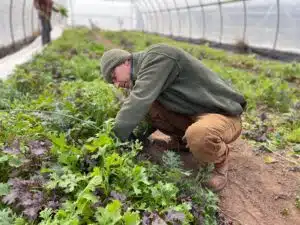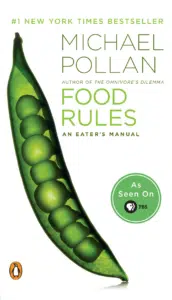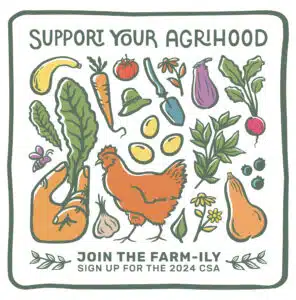This month we celebrate Earth Day – and today we would like to share a bit about how agriculture plays a substantial role in the world we live in and what you can do to help us cultivate a brighter future.

Some of you have probably already experienced when shopping for groceries or trying to connect with farms and food brands it can be exceedingly difficult to find resources without bias and clear nutritional comparisons. Even we have moments where we need to re-read the label and then do more research because marketing and the numerous labels on packaging today make it difficult to understand – and unfortunately this lack of clarity is intentional, putting more of the burden on the individual to be well informed and diligent.
Agricultural markets in the United States are sophisticated and can be difficult to understand if you are not familiar with the industry. The following description is an oversimplification: In the US we primarily subsidize agricultural commodities – especially corn, soy, wheat, rice, and sugar. The byproducts of those commodities are therefore indirectly subsidized – think ethanol, all meats fed on those commodities or byproducts such as eggs and milk. Most crops/commodities are not subsidized in any single way. For example, ethanol benefits from all of the corn subsidies (multiple insurance programs, government loan programs & disaster relief) and from the Renewable Fuels Standard which creates and mandates the market for corn ethanol. Each of these commodities has associations or groups that are heavily involved in lobbying and producing op eds that are well disguised as journalism to influence purchasing habits and public perception; many industry associations have a government organized checkoff program to market that commodity – like the “Got Milk” campaign from the nineties.
The Willowsford Farm team has been involved in the local foods movement for two decades (yikes, our mid-forties arrived faster than we anticipated!) and many of the talking points from years ago have demonstrated to be misleading. Food miles do not necessarily contribute much to the overall fossil fuel used in the food system; it matters far more how the farms and grocery chains are set up and managed. Individual plastic bag bans do not really reduce the fossil fuel used in the food system; food waste on the farm, in the food supply chain, and in homes contribute thousands of times the emissions of the entirety of plastic grocery bags. Today, we tend to center talking points on having robust regional food systems to contribute culturally, to spread risk geographically, to connect people with their food systems, and if properly managed (which in our estimation most agricultural land in the US is not) to protect and promote biodiversity.
So how do you keep yourself up to date about the food system? There are so many books, websites, articles, and influencers that it can be difficult to wade through all the information. Below are a few of our favorites by topic, but if you find yourself puzzled or looking for something specific, do not hesitate to reach out. Your Farm team is available and eager to share resources – but be warned, the conversation might turn into a policy soapbox…
 For what to eat – Andy enjoys the approachability of Michal Pollan’s
For what to eat – Andy enjoys the approachability of Michal Pollan’s
Food Rules, an Eater’s Manual.
For a daily dose of what is going on in the food world – Marion Nestle’s Food Politics blog. It is quick and easy to read, and she is one of the most knowledgeable and connected people in the US on this subject; It will be a sad day when she decides to retire. Her post on the nuances of grass-fed beef is particularly enlightening in this era of marketing dominated food sales and messaging. Her post from March 19th about European food subsidies is just as relevant here in the US as it is in Europe.
For a two-pager summarizing how agriculture impacts the climate worldwide, and policy recommendations – The recent From Plate to Planet report from the International Panel of Experts on Sustainable Food Systems. It is especially true that the US food system is entirely dependent on fossil fuel energy sources, CAFOs (Concentrated Animal Feeding Operations), and externalizing costs and will require an overhaul in policy and practicality to reduce agriculture’s pollution footprint. When accounting for fertilizer, pesticides, land use, transportation, storage, and distribution – our food system contributes a third of gross world emissions.
Interested in food justice? One of the best sources to stay informed about food justice is Civil Eats.
Support the Earth by voting with your food dollar and support Willo wsford Farm today by joining the CSA. We have a wide selection of products including organic produce, free-range non-GMO eggs, honey, and local cheese, fruit, meat, bakery and pantry products from our regional partners. The cool thing about our partners – your experienced Farm team, who understands the nuances and lack of transparency in our food system, has already vetted their practices for you.
wsford Farm today by joining the CSA. We have a wide selection of products including organic produce, free-range non-GMO eggs, honey, and local cheese, fruit, meat, bakery and pantry products from our regional partners. The cool thing about our partners – your experienced Farm team, who understands the nuances and lack of transparency in our food system, has already vetted their practices for you.
The upside to living in Willowsford – You have easy access to vote with your food dollar and support a Farm that strives to be more regenerative every day + you also have access to programs, volunteer opportunities and events that provide opportunities to expand your understanding of our food system and how they impact this beautiful planet we call home.
We hope this food for thought motivates you to choose local and sustainable for your next meal – and know that it starts with just one meal – it doesn’t have to be every meal – but start somewhere and know that your choice and efforts are applauded and make a difference.
Written by Willowsford Farm Director, Andy Dunham + Mel Dunham, Contractor
